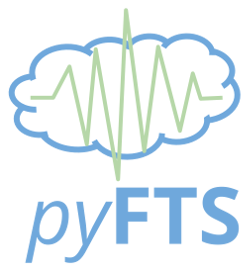pyFTS.models.seasonal package¶
Submodules¶
pyFTS.models.seasonal.SeasonalIndexer module¶
-
class
pyFTS.models.seasonal.SeasonalIndexer.DataFrameSeasonalIndexer(index_fields, index_seasons, data_field, **kwargs)¶ Bases:
pyFTS.models.seasonal.SeasonalIndexer.SeasonalIndexerUse the Pandas.DataFrame index position to index the seasonality
-
get_data(data)¶
-
get_data_by_season(data, indexes)¶
-
get_index_by_season(indexes)¶
-
get_season_by_index(index)¶
-
get_season_of_data(data)¶
-
set_data(data, value)¶
-
-
class
pyFTS.models.seasonal.SeasonalIndexer.DateTimeSeasonalIndexer(date_field, index_fields, index_seasons, data_field, **kwargs)¶ Bases:
pyFTS.models.seasonal.SeasonalIndexer.SeasonalIndexerUse a Pandas.DataFrame date field to index the seasonality
-
get_data(data)¶
-
get_data_by_season(data, indexes)¶
-
get_index(data)¶
-
get_index_by_season(indexes)¶
-
get_season_by_index(index)¶
-
get_season_of_data(data)¶
-
set_data(data, value)¶
-
-
class
pyFTS.models.seasonal.SeasonalIndexer.LinearSeasonalIndexer(seasons, units, ignore=None, **kwargs)¶ Bases:
pyFTS.models.seasonal.SeasonalIndexer.SeasonalIndexerUse the data array/list position to index the seasonality
-
get_data(data)¶
-
get_index_by_season(indexes)¶
-
get_season_by_index(index)¶
-
get_season_of_data(data)¶
-
-
class
pyFTS.models.seasonal.SeasonalIndexer.SeasonalIndexer(num_seasons, **kwargs)¶ Bases:
objectSeasonal Indexer. Responsible to find the seasonal index of a data point inside its data set
-
get_data(data)¶
-
get_data_by_season(data, indexes)¶
-
get_index(data)¶
-
get_index_by_season(indexes)¶
-
get_season_by_index(inde)¶
-
get_season_of_data(data)¶
-
pyFTS.models.seasonal.cmsfts module¶
-
class
pyFTS.models.seasonal.cmsfts.ContextualMultiSeasonalFTS(**kwargs)¶ Bases:
pyFTS.models.seasonal.sfts.SeasonalFTSContextual Multi-Seasonal Fuzzy Time Series
-
forecast(data, **kwargs)¶ Point forecast one step ahead
Parameters: - data – time series data with the minimal length equal to the max_lag of the model
- kwargs – model specific parameters
Returns: a list with the forecasted values
-
forecast_ahead(data, steps, **kwargs)¶ Point forecast n steps ahead
Parameters: - data – time series data with the minimal length equal to the max_lag of the model
- steps – the number of steps ahead to forecast (default: 1)
- start_at – in the multi step forecasting, the index of the data where to start forecasting (default: 0)
Returns: a list with the forecasted values
-
generate_flrg(flrs)¶
-
get_midpoints(flrg, data)¶
-
train(data, **kwargs)¶ Method specific parameter fitting
Parameters: - data – training time series data
- kwargs – Method specific parameters
-
-
class
pyFTS.models.seasonal.cmsfts.ContextualSeasonalFLRG(seasonality)¶ Bases:
pyFTS.models.seasonal.sfts.SeasonalFLRGContextual Seasonal Fuzzy Logical Relationship Group
-
append_rhs(flr, **kwargs)¶
-
pyFTS.models.seasonal.common module¶
-
class
pyFTS.models.seasonal.common.DateTime¶ Bases:
enum.EnumData and Time granularity for time granularity and seasonality identification
-
day_of_month= 30¶
-
day_of_week= 7¶
-
day_of_year= 364¶
-
half= 2¶
-
hour= 24¶
-
hour_of_month= 744¶
-
hour_of_week= 168¶
-
hour_of_year= 8736¶
-
minute= 60¶
-
minute_of_day= 1440¶
-
minute_of_month= 44640¶
-
minute_of_week= 10080¶
-
minute_of_year= 524160¶
-
month= 12¶
-
quarter= 4¶
-
second_of_day= 86400¶
-
second_of_hour= 3600¶
-
second_of_minute= 60.00001¶
-
sixth= 6¶
-
third= 3¶
-
year= 1¶
-
-
class
pyFTS.models.seasonal.common.FuzzySet(datepart, name, mf, parameters, centroid, alpha=1.0, **kwargs)¶ Bases:
pyFTS.common.FuzzySet.FuzzySetTemporal/Seasonal Fuzzy Set
-
transform(x)¶ Preprocess the data point for non native types
Parameters: x – Returns: return a native type value for the structured type
-
-
pyFTS.models.seasonal.common.strip_datepart(date, date_part, mask='')¶
pyFTS.models.seasonal.msfts module¶
-
class
pyFTS.models.seasonal.msfts.MultiSeasonalFTS(name, indexer, **kwargs)¶ Bases:
pyFTS.models.seasonal.sfts.SeasonalFTSMulti-Seasonal Fuzzy Time Series
-
forecast(data, **kwargs)¶ Point forecast one step ahead
Parameters: - data – time series data with the minimal length equal to the max_lag of the model
- kwargs – model specific parameters
Returns: a list with the forecasted values
-
forecast_ahead(data, steps, **kwargs)¶ Point forecast n steps ahead
Parameters: - data – time series data with the minimal length equal to the max_lag of the model
- steps – the number of steps ahead to forecast (default: 1)
- start_at – in the multi step forecasting, the index of the data where to start forecasting (default: 0)
Returns: a list with the forecasted values
-
generate_flrg(flrs)¶
-
train(data, **kwargs)¶ Method specific parameter fitting
Parameters: - data – training time series data
- kwargs – Method specific parameters
-
pyFTS.models.seasonal.partitioner module¶
-
class
pyFTS.models.seasonal.partitioner.TimeGridPartitioner(**kwargs)¶ Bases:
pyFTS.partitioners.partitioner.PartitionerEven Length DateTime Grid Partitioner
-
build(data)¶ Perform the partitioning of the Universe of Discourse
Parameters: data – training data Returns:
-
build_index()¶
-
plot(ax)¶ Plot the :param ax: :return:
-
search(data, **kwargs)¶ Perform a search for the nearest fuzzy sets of the point ‘data’. This function were designed to work with several overlapped fuzzy sets.
Parameters: - data – the value to search for the nearest fuzzy sets
- type – the return type: ‘index’ for the fuzzy set indexes or ‘name’ for fuzzy set names.
- results – the number of nearest fuzzy sets to return
Returns: a list with the nearest fuzzy sets
-
pyFTS.models.seasonal.sfts module¶
Simple First Order Seasonal Fuzzy Time Series implementation of Song (1999) based of Conventional FTS by Chen (1996)
- Song, “Seasonal forecasting in fuzzy time series,” Fuzzy sets Syst., vol. 107, pp. 235–236, 1999.
S.-M. Chen, “Forecasting enrollments based on fuzzy time series,” Fuzzy Sets Syst., vol. 81, no. 3, pp. 311–319, 1996.
-
class
pyFTS.models.seasonal.sfts.SeasonalFLRG(seasonality)¶ Bases:
pyFTS.common.flrg.FLRGFirst Order Seasonal Fuzzy Logical Relationship Group
-
append_rhs(c, **kwargs)¶
-
get_key()¶ Returns a unique identifier for this FLRG
-
-
class
pyFTS.models.seasonal.sfts.SeasonalFTS(**kwargs)¶ Bases:
pyFTS.common.fts.FTSFirst Order Seasonal Fuzzy Time Series
-
forecast(data, **kwargs)¶ Point forecast one step ahead
Parameters: - data – time series data with the minimal length equal to the max_lag of the model
- kwargs – model specific parameters
Returns: a list with the forecasted values
-
generate_flrg(flrs)¶
-
get_midpoints(flrg)¶
-
train(data, **kwargs)¶ Method specific parameter fitting
Parameters: - data – training time series data
- kwargs – Method specific parameters
-
